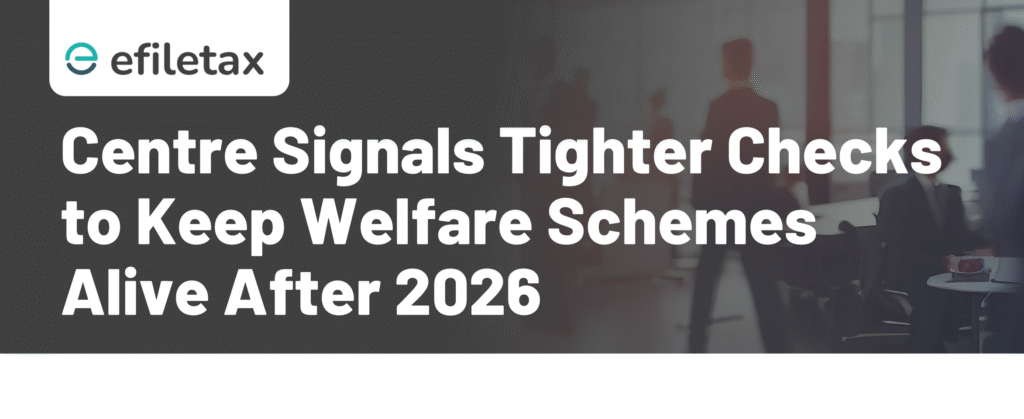
Government Scheme Continuity Beyond March 2026 FinMin Sets the Tone
In a recent policy push, the Finance Ministry (FinMin) signaled that all government schemes beyond March 31, 2026, will need strict financial scrutiny. This comes amid rising subsidy bills and the need to streamline welfare expenditure within sustainable limits.
Let’s simplify what this means for Indian taxpayers, consultants, and businesses.
Why Is March 31, 2026 a Cut-Off?
- The current Medium-Term Expenditure Framework (MTEF) for various central schemes ends in FY 2025–26.
- Schemes without demonstrated impact or fiscal feasibility may be discontinued or merged.
What Did the FinMin Say?
The Ministry of Finance (Department of Expenditure) recently issued a memorandum to all ministries, stating:
- No scheme will be continued post-31.03.2026 without prior appraisal.
- Departments must submit outcome reports, cost-benefit analyses, and third-party evaluations.
- Emphasis is on eliminating duplication and maximising social returns.
📌 [Source: Ministry of Finance Memorandum dated May 2025]
Who Will Be Affected?
| Stakeholder | Impact |
|---|---|
| Taxpayers | Reduced subsidy leakage, better fiscal discipline. |
| CA Firms / Consultants | Increased advisory work for grant reporting & fund optimization. |
| Small Businesses | Need to track viability of MSME and credit-linked schemes. |
| NGOs & CSR Wings | May require revalidation of their funding-linked programs. |
Key Government Schemes Likely to Face Review
- PMAY (Housing for All)
- PM Kisan & Direct Benefit Transfers (DBT)
- Startup India & Credit Guarantee Schemes
- PLI Schemes in Manufacturing
- Swachh Bharat, Jal Jeevan Mission
These schemes must prove quantifiable outcomes or risk realignment.
Legal and Financial Oversight
- Expenditure Management Commission and CAG reports will assist in evaluation.
- Rule-based spending under FRBM Act will shape allocations.
- Revival, merger, or sunset clauses will now be enforced with fiscal logic.
Expert View: What Professionals Should Watch
“We advise clients to proactively assess their dependencies on government incentives. Budgetary shifts after 2026 may alter cash flows for sectors like agri, infra, and EV.”
— R. Subramanian, Tax Advisor, Efiletax Partner
What Should You Do Now?
- For Businesses: Reassess financial forecasts linked to government grants.
- For Practitioners: Prepare clients for a possible post-2026 subsidy overhaul.
- For Startups: Track scheme continuity, especially in tech and manufacturing.
FAQs
Q1: Will flagship schemes like PM Kisan be scrapped?
A: Not necessarily. But they must demonstrate measurable outcomes and cost efficiency to continue beyond FY 2025–26.
Q2: What is the role of CAG in this process?
A: The Comptroller and Auditor General (CAG) will provide audits and reports used to evaluate scheme performance.
Q3: Can states continue central schemes if the Centre discontinues funding?
A: Only if the state allocates funds from its own budget, or modifies the scheme into a state-led initiative.
Summary
Government schemes beyond March 31, 2026, face strict continuation criteria set by the Finance Ministry. Departments must submit proof of effectiveness. Learn what it means for taxpayers and businesses.
Conclusion:
India is entering a new phase of performance-linked public spending. As FinMin tightens the belt, taxpayers, consultants, and entrepreneurs must track policy shifts closely.